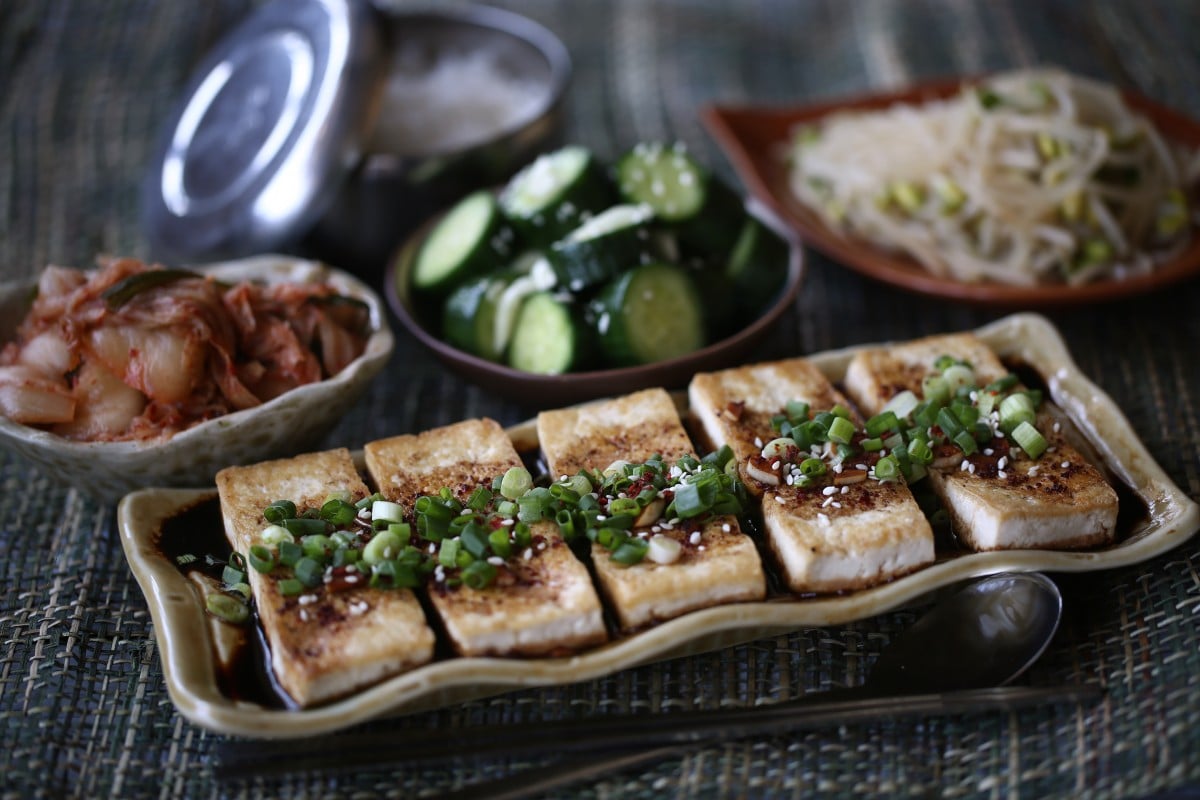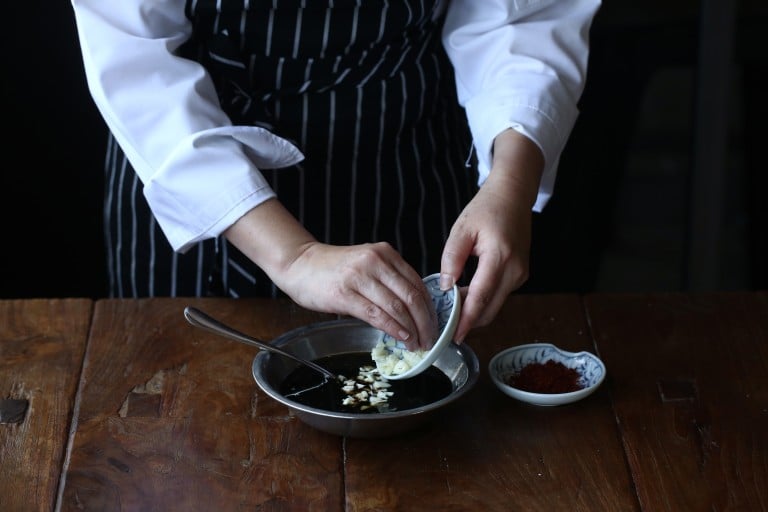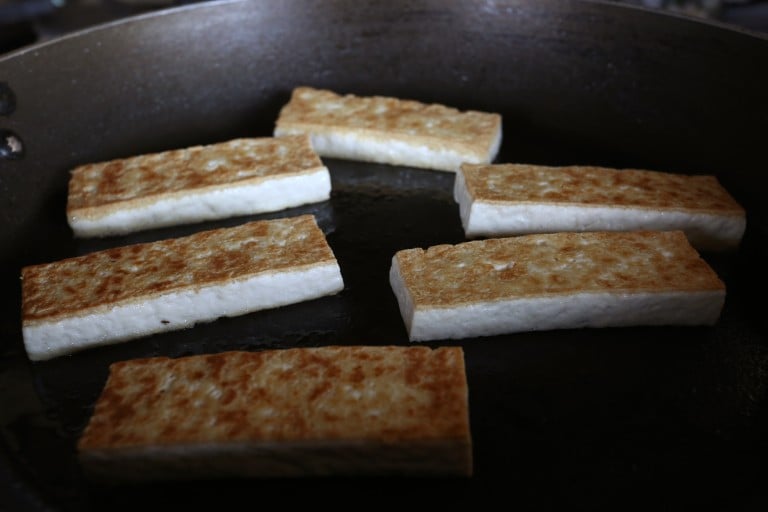
Whenever I’m in need of a high-protein vegetarian/vegan dish, bean curd is the first thing that comes to mind. I never could understand people who said that bean curd was bland. Of course it can be, if you don’t cook it and season it correctly, but the same could be said about any other ingredient, including all types of meat or seafood.
This dish is often served as banchan (a side dish) to accompany meats or seafood in Korean restaurants, but it also makes for a satisfying, healthy main course, especially when it comes with kimchi, a good selection of banchan and a steaming bowl of rice.
Vegetarians/vegans should check with the salesperson (or read the label) when buying kimchi and banchan at shops, to make sure they don’t contain seafood products such as fish sauce or salted shrimp.
Use paper towels to blot up the excess moisture from the exterior of the blocks of bean curd, pressing lightly.
Slice the bean curd into pieces about 8mm (⅜ in) thick and lay them on a cutting board. Lightly sprinkle salt over the bean curd, then turn the pieces over and sprinkle salt on the other side. Leave them while preparing the sauce.

Finely mince the garlic clove, then put it in a bowl, add the sugar and mix. Stir in the soy sauce, sesame oil, gochugaru and sesame seeds.
Thinly slice the spring onions, cutting them on the diagonal.
Pour about 10ml (2 tsp) of oil into a skillet, preferably un-enamelled cast iron or non-stick, placed over a medium flame. Use a paper towel to rub the oil into the pan to coat it evenly.
Use a paper towel to blot the cut surfaces of the bean curd to remove excess moisture.
When the skillet is hot, lay the bean curd slices in it in one layer. Pan-fry the pieces for about three minutes, or until pale golden on the bottom.

Flip the pieces over (after rubbing more oil into the skillet, if necessary) and pan-fry the other side.

Lay the pieces on a serving dish. Stir the sauce well, then spoon it over the bean curd slices. Sprinkle with the spring onion, then serve.